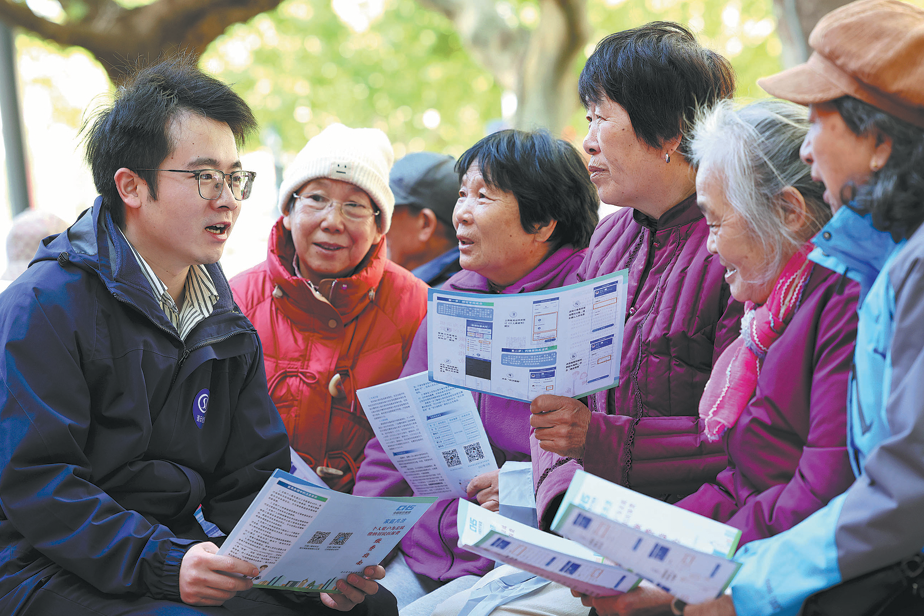ASEAN tourism reaps Spring Festival gains
Incentives fuel surge in Chinese travelers in Southeast Asia during holiday season
By YANG HAN in Hong Kong and YANG WANLI in Bangkok | CHINA DAILY | Updated: 2024-02-21 07:28

Southeast Asia has become one of the most popular destinations for Chinese travelers during the recent Chinese New Year holiday, offering further proof that the country's outbound tourism is recovering strongly.
Thailand, Singapore, Malaysia, Indonesia, and Vietnam were among the top 10 most popular destinations for outbound travel during the Chinese New Year holiday, according to data from Chinese online travel platform Trip.com.
The eight-day holiday that began on Feb 10 also marks the country's first travel rush of the year, with the National Immigration Administration saying that more than 13.5 million inbound and outbound trips were recorded during the holiday season.
"As China implements a visa-free policy for a larger circle of friends, the country sees its inbound and outbound travels soar, with more Chinese tourists going abroad and more foreign travelers visiting China," said Chinese Foreign Ministry spokeswoman Mao Ning on Monday.
"Spring Festival became the peak time of global tourism," said Mao at a daily news conference.
Thailand welcomed nearly 880,000 foreign visitors between Feb 5 and 11, according to the Thai Ministry of Tourism and Sports.
There was a significant surge in arrivals from East Asia and Southeast Asia, especially the Chinese mainland, Malaysia, Singapore, and South Korea.
Of those regions, China ranked top for foreign tourists during the Spring Festival with nearly 200,000 visitors — an increase of 38 percent compared with the previous week.
The visa exemption policy for visitors from China, India and Kazakhstan, and the increased frequency of flights are greatly supporting the Thai tourism industry, Thai Minister of Tourism and Sports Sudawan Wangsuphakitkoson told a recent news conference.
China and Thailand signed an agreement on mutual visa exemption for holders of ordinary passports and passports for public affairs last month. The policy will come into effect on March 1 and is expected to boost people-to-people exchanges between the two countries.
Visa-free policy hailed
Pinit Jarusombat, president of the Thai-Chinese Cultural Relationship Council, said the visa-free policy will stimulate tourism and further strengthen bilateral ties between China and Thailand.
"Thailand is one of the most popular destinations among the Chinese as the two nations have close cultural bonds. Also, Thailand is a hub for investment and education in the ASEAN region," he said, referring to the Association of Southeast Asian Nations bloc.
According to local media, Chinese tourists spend at least 20,000 yuan ($2,780) per person on average during trips to Thailand. This revenue has contributed to businesses at various levels.
Thailand is awaiting a boom in visitors during Songkran — the water festival that falls in April and marks the beginning of the traditional Thai New Year.
After implementing a visa-free policy for Chinese travelers last December, Malaysia saw a total of more than 100,000 Chinese tourists during the Spring Festival holiday, a 50 percent increase compared to the same period last year, Sin Chew Daily reported on Sunday.
Local tour operators estimated that these tourists spent between 1 billion ($208.59 million) and 1.5 billion ringgit in the country.
Though it is not an official holiday in Cambodia, the Chinese New Year is broadly celebrated in the kingdom and more than 1 million domestic and foreign tourists visited Cambodia during Spring Festival celebrations, according to Cambodia's Ministry of Tourism.
Top Sopheak, secretary of state and spokesman of Cambodia's Ministry of Tourism, said he believed that the number of Chinese visitors during the festival was on the rise as there were many bookings of flights and tour guides from Chinese holidaymakers.
Cheng Mingming, professor of digital marketing at Curtin University in Australia, said lower travel costs compared with long-haul destinations and visa-free or visa-on-arrival arrangements have made Southeast Asia more attractive during the holiday.
"Social media, in particular, is playing a very crucial role for the young generations," said Cheng, adding that many Chinese tourists in Southeast Asia are individual travelers and often use social media platforms to gather "authentic" travel-related information shared by other travelers instead of checking official tourism websites.
Noting that Southeast Asia has been a popular destination for Chinese travelers long before the COVID-19 pandemic, Cheng said he expects Southeast Asia to remain among the most popular destinations for Chinese outbound tourists, together with the Maldives, Japan, and South Korea.
Contact the writers at kelly@chinadailyapac.com.
























